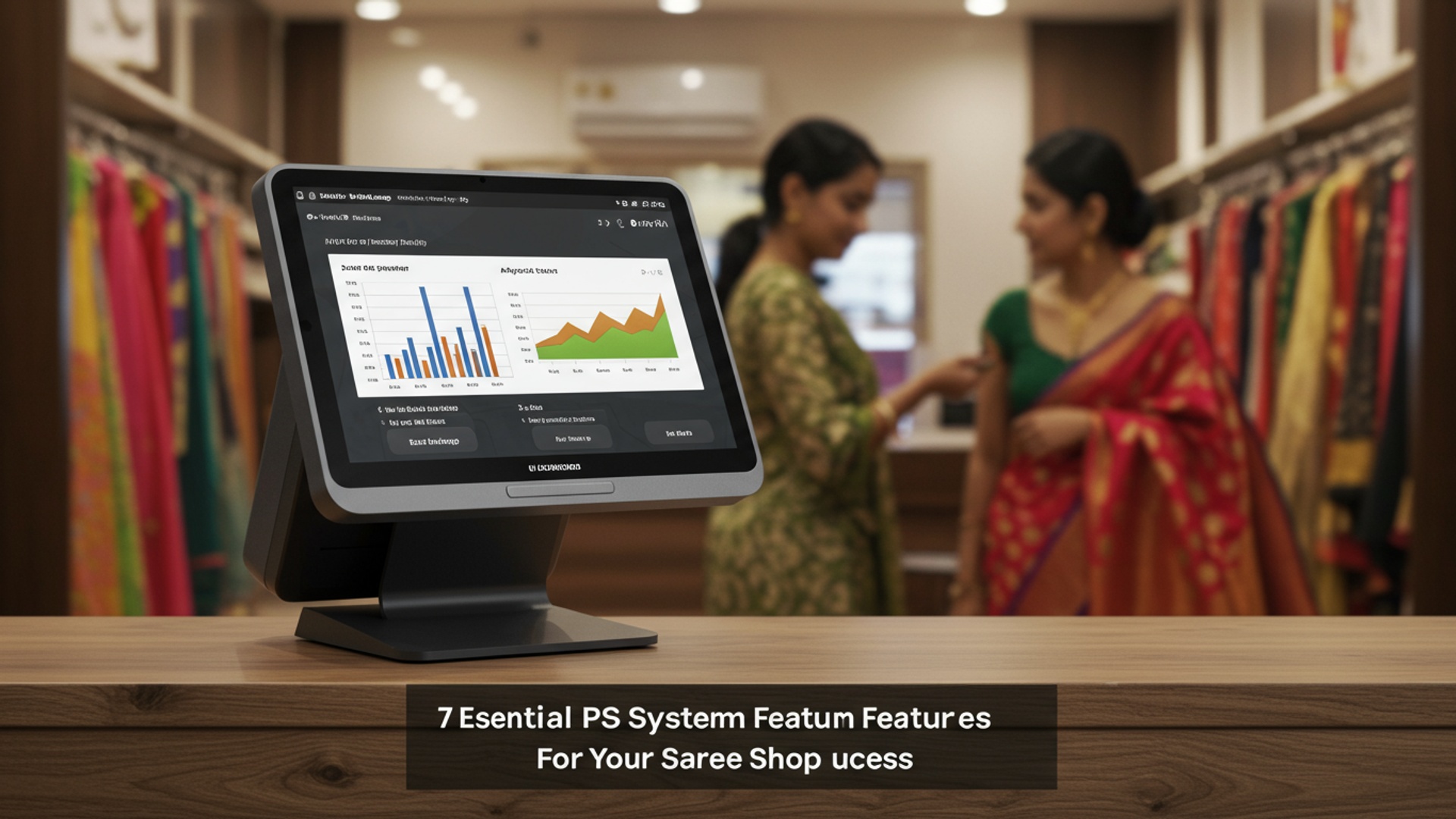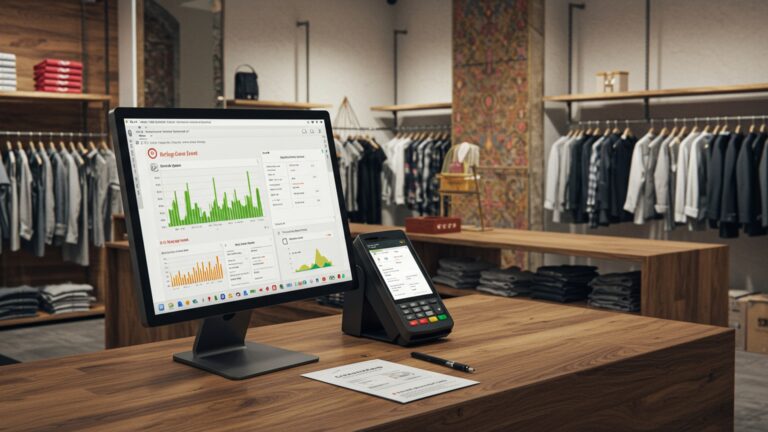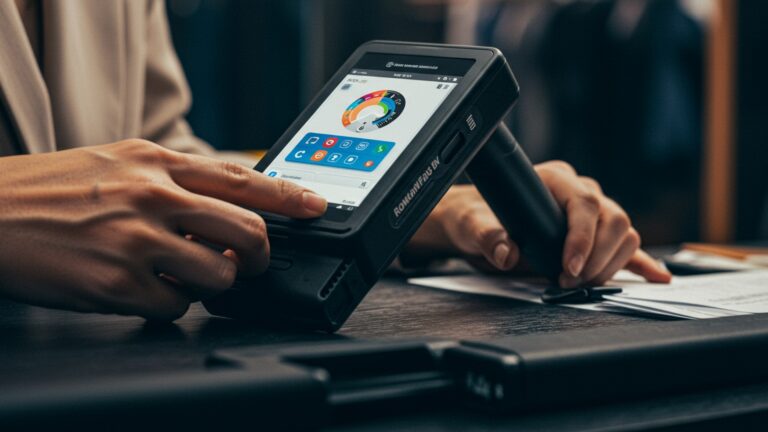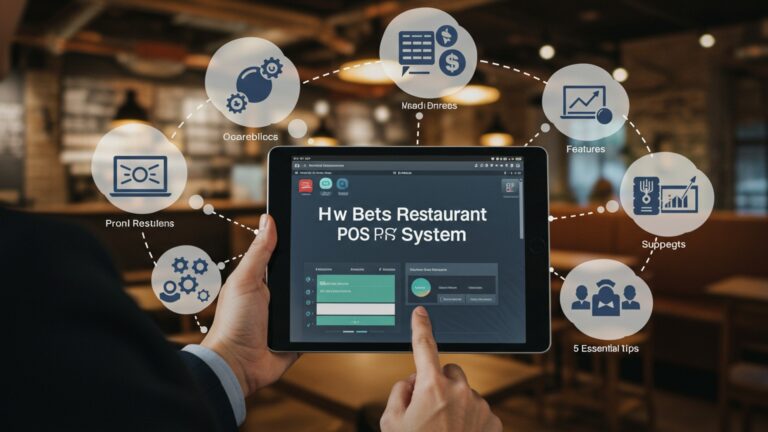7 Essential POS System Features for Your Saree Shop Success
The intricate world of saree retail, with its vast array of weaves from Kanjivaram to Banarasi, delicate embroidery. diverse price points, demands more than just a traditional cash register. Managing inventory by fabric, color, or zari work, tracking customer preferences for specific styles. seamlessly integrating digital payments like UPI are critical for success in today’s competitive market. A specialized pos system for saree shop isn’t merely a transaction tool; it’s a strategic asset that automates complex stock management, provides real-time sales analytics, enhances customer relationship management with loyalty programs. ensures a smooth, modern checkout experience, empowering store owners to focus on curation and customer engagement rather than operational headaches.

Efficient Inventory Management for Diverse Collections
For a saree shop, managing inventory isn’t just about counting items; it’s about meticulously tracking a vast array of unique products, each with its own fabric, weave, design, color. even regional origin. A robust pos system for saree shop must offer sophisticated inventory management capabilities to handle this complexity. Imagine a customer asking for a Banarasi silk saree in a specific shade of maroon – without precise inventory data, locating it can be a time-consuming, frustrating process for both staff and customers.
Key aspects of effective inventory management include:
- SKU Generation and Tracking
- Real-time Updates
- Stock Categorization and Tagging
Beyond basic product names, a POS should allow for detailed Stock Keeping Unit (SKU) generation that includes attributes like material (e. g. , silk, cotton, georgette), weave (e. g. , Kanjivaram, Chanderi, Tussar), design motif, color. even border type. This granular detail ensures accurate tracking.
Every sale, return, or new arrival should automatically update stock levels across all channels. This prevents overselling and helps in timely reordering.
The ability to categorize sarees by region, occasion (bridal, festive, daily wear), price range, or designer makes browsing and search far more efficient for both staff and customers.
Consider “Saree Palace,” a thriving boutique. Before implementing a modern pos system for saree shop, their inventory was managed via spreadsheets and manual stock checks. This often led to discrepancies, lost sales due to inability to locate specific sarees. wasted time during stock audits. With their new POS, each saree is barcoded with a detailed SKU. When a customer inquires about a particular type of saree, the staff can instantly check availability, location in the store. even suggest similar alternatives, drastically improving customer experience and operational efficiency.
Insightful Sales Reporting and Analytics
Understanding what sells, when it sells. to whom is paramount for any retail business. a saree shop is no exception. A powerful pos system for saree shop goes beyond just processing transactions; it provides actionable insights through comprehensive sales reporting and analytics. These insights help owners make informed decisions on purchasing, marketing. staffing.
Essential reporting features include:
- Best-selling Products
- Sales Trends Over Time
- Employee Performance
- Profit Margin Analysis
Identify which saree types, fabrics, or designs are most popular. This helps in optimizing inventory and future buying decisions. For instance, knowing that lightweight cotton sarees sell fastest during summer can inform your seasonal stock.
review daily, weekly, monthly, or yearly sales data to spot trends, predict peak seasons (e. g. , wedding season, festivals). plan promotions accordingly.
Track sales generated by individual staff members, which can be useful for commission structures, training needs. performance reviews.
interpret the profitability of different product categories or even individual sarees, helping you price items competitively and negotiate better with suppliers.
“Vanya’s Weaves,” a premium saree store, utilized their POS analytics to discover that while their Kanjivaram silks were their highest-priced items, their mid-range Chiffon and Georgette sarees had the highest turnover and contributed significantly to overall revenue. This insight led them to diversify their collection in these categories and run targeted promotions, resulting in a 15% increase in monthly sales volume.
Robust Customer Relationship Management (CRM)
In the saree business, building lasting relationships with customers is key to repeat business and word-of-mouth referrals. A sophisticated pos system for saree shop integrates CRM functionalities that allow you to capture, store. leverage customer data to personalize experiences and foster loyalty.
Core CRM features include:
- Customer Profiles
- Loyalty Programs
- Targeted Marketing
Create detailed profiles including contact data, purchase history (what sarees they bought, when. at what price), preferences (e. g. , preferred fabrics, colors, occasions). even notes on their family events.
Implement points-based systems, tiered memberships, or special discounts for repeat customers directly through the POS.
Use purchase history to send personalized offers, birthday discounts, or notifications about new arrivals that align with their past preferences. For example, if a customer frequently buys traditional silk sarees, inform them about your new collection of designer silk weaves.
A customer who bought a bridal saree from your shop three years ago might be looking for a gift for a relative’s wedding. A good pos system for saree shop allows you to track that purchase and send them a personalized email about your latest festive collection, perhaps even with a small loyalty discount. This kind of targeted engagement far outperforms generic marketing and builds strong customer bonds.
Seamless Multi-Channel Sales (Omnichannel Integration)
Modern retail isn’t confined to a single physical location. Customers expect to browse online, purchase in-store, or even buy through social media. An effective pos system for saree shop must offer robust multi-channel or omnichannel integration, unifying your online and offline presence for a consistent customer experience.
This integration typically involves:
- E-commerce Synchronization
- Click-and-Collect Options
- Unified Customer Data
Automatically update inventory levels between your physical store and your online store (e. g. , Shopify, WooCommerce). A saree sold in-store should instantly reflect as “out of stock” online, preventing frustrating customer experiences.
Allow customers to purchase online and pick up in-store, leveraging both channels.
Ensure that customer profiles and purchase histories are accessible whether they shop online or in your physical store. This allows for seamless returns, exchanges. personalized recommendations regardless of the purchase channel.
Comparison: Manual vs. Integrated Omnichannel
| Feature | Manual Multi-Channel (No POS Integration) | Integrated Omnichannel (POS Integration) |
|---|---|---|
| Inventory Updates | Manual updates, high risk of overselling/underselling | Real-time, automatic updates across all channels |
| Customer Experience | Inconsistent, potential for discrepancies | Seamless, personalized experience regardless of channel |
| Data Silos | Separate data for online and offline sales | Unified customer and sales data |
| Operational Efficiency | High manual effort, prone to errors | Automated processes, reduced errors, improved efficiency |
According to a recent retail study, businesses with strong omnichannel engagement strategies achieve a 9. 5% year-over-year increase in revenue, compared to 3. 4% for those with weak omnichannel customer engagement. For a saree shop with unique, often high-value items, this integration is not just a convenience but a strategic imperative.
Efficient Employee Management
Your sales team is the face of your saree shop. their efficiency directly impacts customer satisfaction and sales. A good pos system for saree shop includes features that help manage your staff, track their performance. streamline day-to-day operations.
Key employee management functionalities:
- User Permissions
- Time and Attendance Tracking
- Sales Performance Tracking
- Training and Development
Assign different access levels to staff members based on their roles. For example, a cashier might only have access to sales and returns, while a manager can view reports and manage inventory.
Monitor employee work hours, breaks. shifts, simplifying payroll processing.
Attribute sales to specific employees, which is crucial for commission-based pay structures, sales incentives. identifying top performers.
By identifying individual sales strengths and weaknesses through POS data, you can tailor training programs to boost overall team performance.
“Rani’s Boutique” used their POS system to track individual sales associate performance. They noticed that one particular associate, while friendly, had lower sales numbers for high-value silk sarees compared to her colleagues. Through this data, the owner provided targeted training on the history and craftsmanship of silk sarees, empowering the associate with knowledge that significantly boosted her confidence and sales in that category.
Streamlined Vendor Management and Purchasing
Sourcing beautiful sarees often involves working with numerous weavers, artisans. wholesale suppliers, each with their own terms and unique products. A comprehensive pos system for saree shop can significantly simplify the complexities of vendor management and purchasing, ensuring your shelves are always stocked with desirable collections.
essential features include:
- Vendor Database
- Purchase Order Generation
- Receiving and Stocking
- Payment Tracking
Maintain a detailed record of all your suppliers, including contact details, payment terms. historical purchase data.
Create and track purchase orders directly from the POS, linking them to specific inventory items. This streamlines the ordering process and ensures accuracy.
Easily record incoming inventory, cross-referencing it with purchase orders. This helps in quickly updating stock levels and identifying any discrepancies.
Keep tabs on payments made to vendors, outstanding invoices. due dates, improving financial control.
Imagine you frequently source handloom sarees from a particular cooperative. Your pos system for saree shop can store all their contact details, past orders. even notes on their specialty weaves. When a certain type of handloom saree sells out, the system can flag it. you can quickly generate a new purchase order to that specific vendor, avoiding delays and ensuring popular items are restocked promptly.
Efficient Barcode Scanning and Labeling
Given the sheer volume and variety of products in a saree shop, manual data entry and price checks are incredibly inefficient and prone to errors. Barcode scanning and labeling are fundamental features of any modern pos system for saree shop that aim to enhance accuracy and speed at every touchpoint.
Benefits of this feature:
- Speedy Checkout
- Accuracy in Inventory
- Efficient Stock Audits
- Custom Labeling
Sales associates can quickly scan barcodes at the point of sale, instantly retrieving product details and pricing, drastically reducing checkout times.
Each scan ensures that the correct item is recorded as sold, reducing manual entry errors and maintaining accurate stock levels.
Conducting inventory counts becomes faster and more accurate with barcode scanners, minimizing disruption to your business.
Generate and print custom barcodes or price tags for new arrivals directly from the POS, especially useful for unique, handcrafted sarees that might not come with pre-printed codes.
// Example of a typical barcode generation process within a POS system
// (Conceptual representation, actual implementation varies by system) function generateSareeBarcode(sareeSKU, sareePrice) { // Logic to combine SKU and price into a barcode string let barcodeData = `${sareeSKU}|${sareePrice}`; // Send barcodeData to a barcode printer API or internal module // This would typically generate a scannable image (e. g. , Code 128, QR code) console. log(`Generating barcode for SKU: ${sareeSKU} with data: ${barcodeData}`); // printer. print(barcodeData); // Imaginary call to a printer function return `Barcode for ${sareeSKU} generated successfully.` ;
} // Usage example:
let mysareeSKU = "SILK-BANARASI-RED-GLD-001";
let mysareePrice = "15000";
console. log(generateSareeBarcode(mysareeSKU, mysareePrice));
A saree shop with hundreds of unique designs can save hours daily by simply scanning items rather than manually typing in product codes or searching for prices. This not only speeds up the customer journey but also frees up staff to focus on assisting customers with selections, which is invaluable in a high-touch retail environment like a saree store.
Conclusion
Your saree shop, a hub of tradition and beauty, demands a modern backbone to truly flourish. The essential POS features we’ve explored aren’t just conveniences; they are strategic assets for growth. Embracing robust inventory management, specifically for tracking unique silk, cotton, or designer saree pieces, alongside integrated payment solutions like UPI and QR codes, ensures seamless transactions and precise stock control. Imagine instantly knowing a customer’s preferred fabric or past purchases, enabling you to offer truly personalized recommendations – that’s the immediate impact of a good CRM within your POS. My personal tip? Don’t just install; actively master your POS’s inventory and customer loyalty modules. I’ve seen firsthand how effectively managing diverse saree collections and recognizing repeat patrons instantly elevates customer satisfaction and drives repeat business. In today’s digital landscape, where personalized experiences and quick, secure payments are paramount, a smart POS empowers your shop to not only keep pace with current trends but to elegantly lead them. Invest wisely. watch your saree shop weave a future of unparalleled success.
More Articles
How to Choose and Implement Cloud Based POS Software for Your Business
Learn How to Master POS Billing Software for Faster Sales and Efficiency
Learn 10 Powerful POS Strategies for Multi Outlet Clothing Business Growth
Master Choosing the Best POS Software in India for Your Business Needs
Guide to 10 Best POS Software Solutions for Indian Clothing Stores
FAQs
Why is good inventory management so essential for a saree shop?
It helps you keep track of every unique saree, blouse piece. accessory, preventing popular items from running out and less popular ones from gathering dust. You’ll always know what’s in stock, where it is. what needs reordering, which is key for a diverse collection like sarees.
How can a POS system help me comprehend my saree shop’s sales better?
A POS system gives you detailed reports on what’s selling, when. to whom. You can see which saree styles are hot, your busiest times. even how well your staff are performing. This data helps you make smarter decisions about buying new stock and running promotions.
Can a POS system help me build better relationships with my saree customers?
Absolutely! With a POS, you can keep a record of customer purchases, preferences. contact info. This means you can offer personalized recommendations, send special birthday discounts, or alert them about new arrivals in their favorite styles, making them feel valued and encouraging repeat visits.
What kind of payment options should a good POS system support for a saree shop?
A modern POS should handle all the popular payment methods seamlessly – cash, credit/debit cards, mobile payments like UPI. even gift cards. Offering diverse payment options makes checkout quick and convenient for all your customers.
Is barcode scanning really necessary for a saree shop?
Yes, it’s a huge time-saver! Barcode scanning makes checkout super fast and accurate. It instantly pulls up product details and prices, reducing manual errors and making inventory updates a breeze, especially with a large and varied saree collection.
How does a POS system assist with managing my saree shop staff?
It helps track employee hours, sales performance. even commission calculations if you have them. This allows you to monitor productivity, manage schedules more efficiently. reward your top-performing sales associates who are great at selling sarees.
What makes a POS system good for handling saree returns or exchanges?
A good POS system simplifies returns and exchanges by quickly accessing the original transaction details. This ensures a smooth, hassle-free process for both your staff and customers, which is crucial for maintaining customer satisfaction, especially with higher-value items like sarees.






